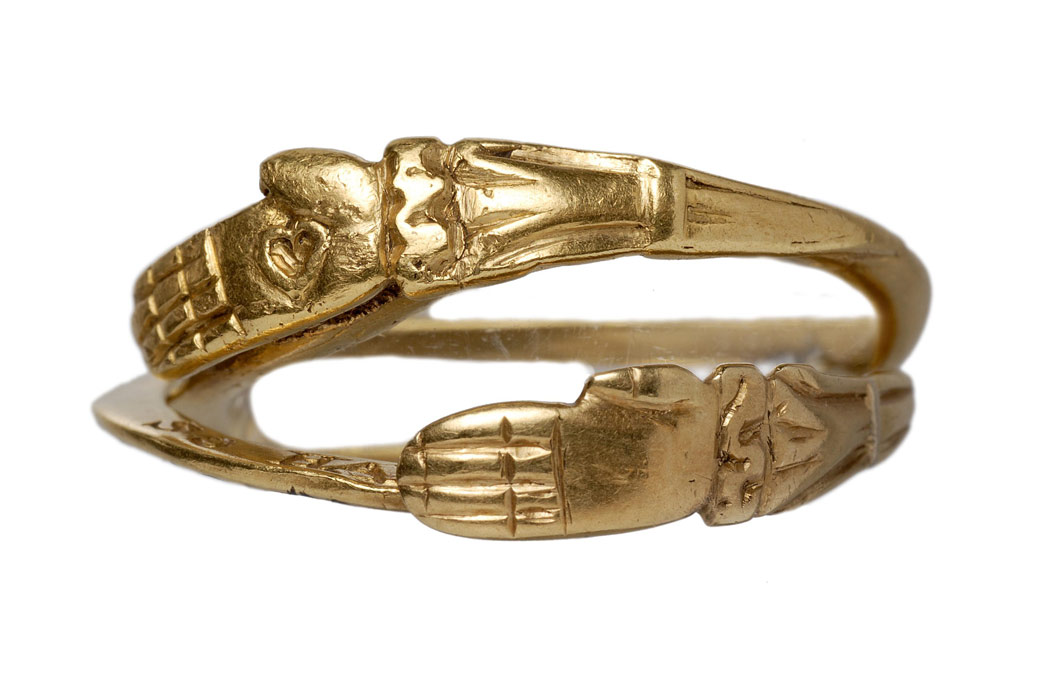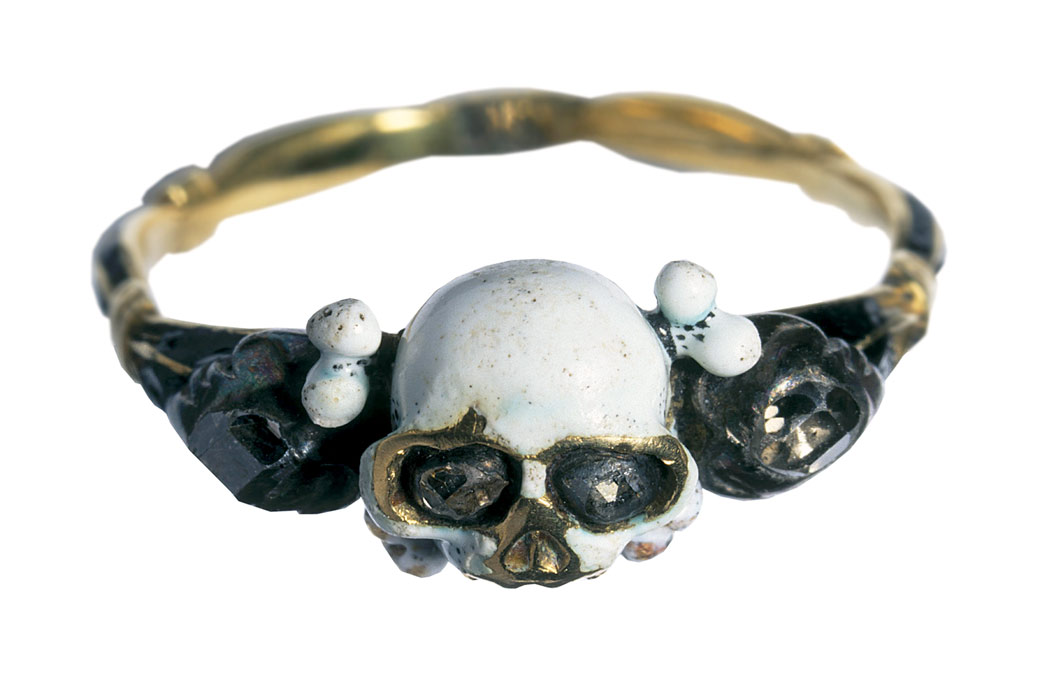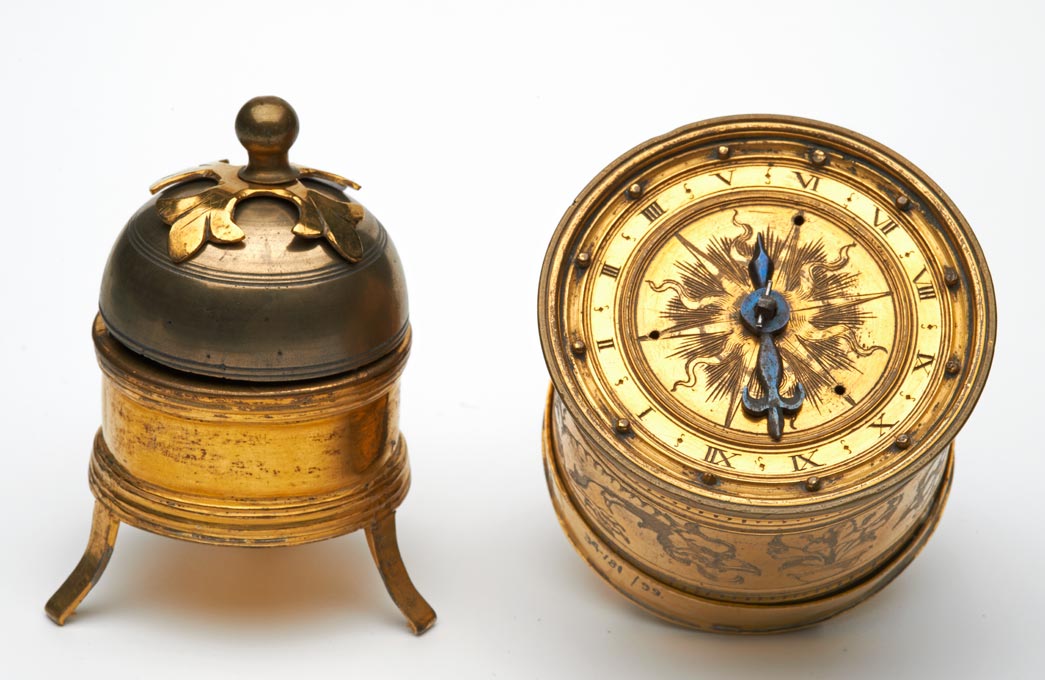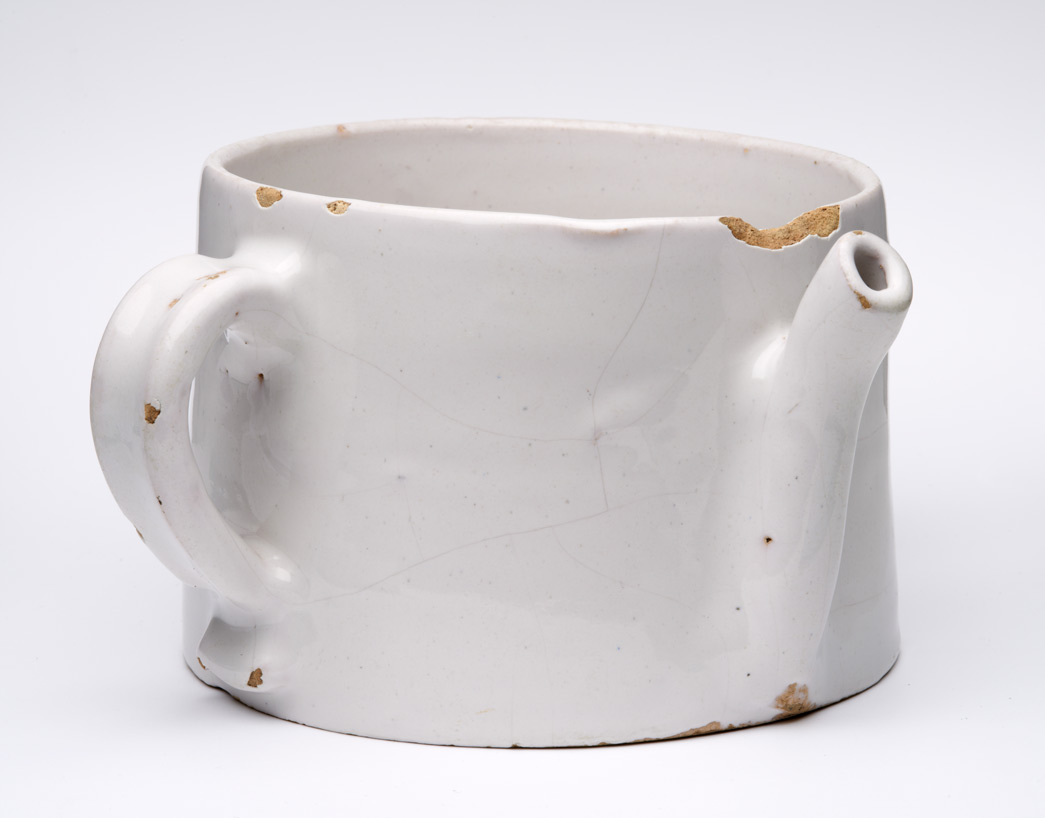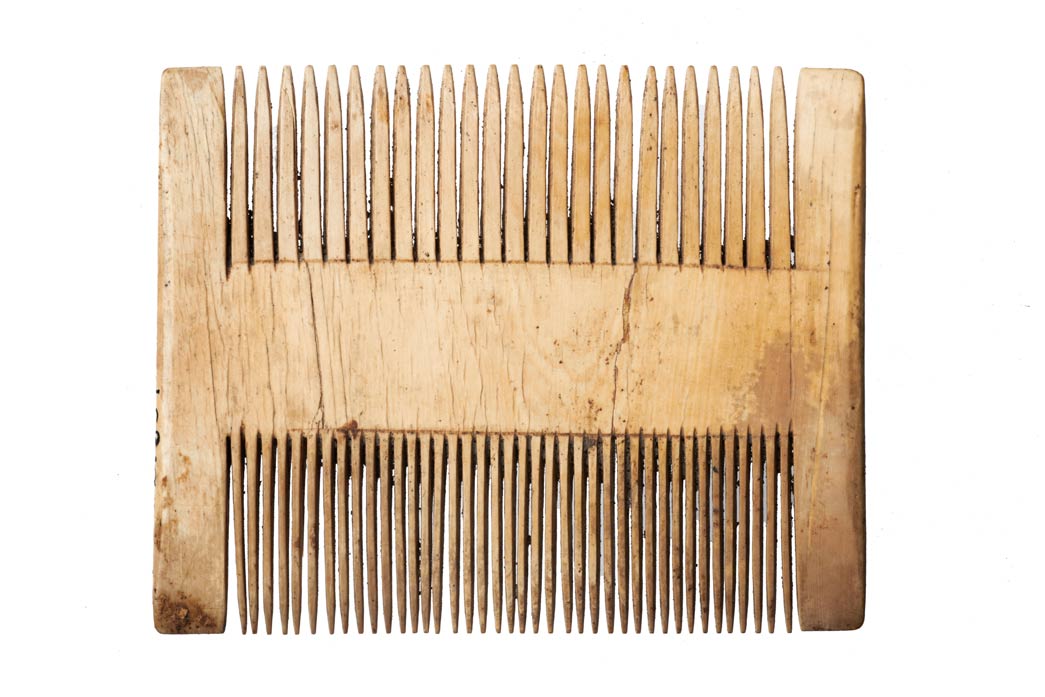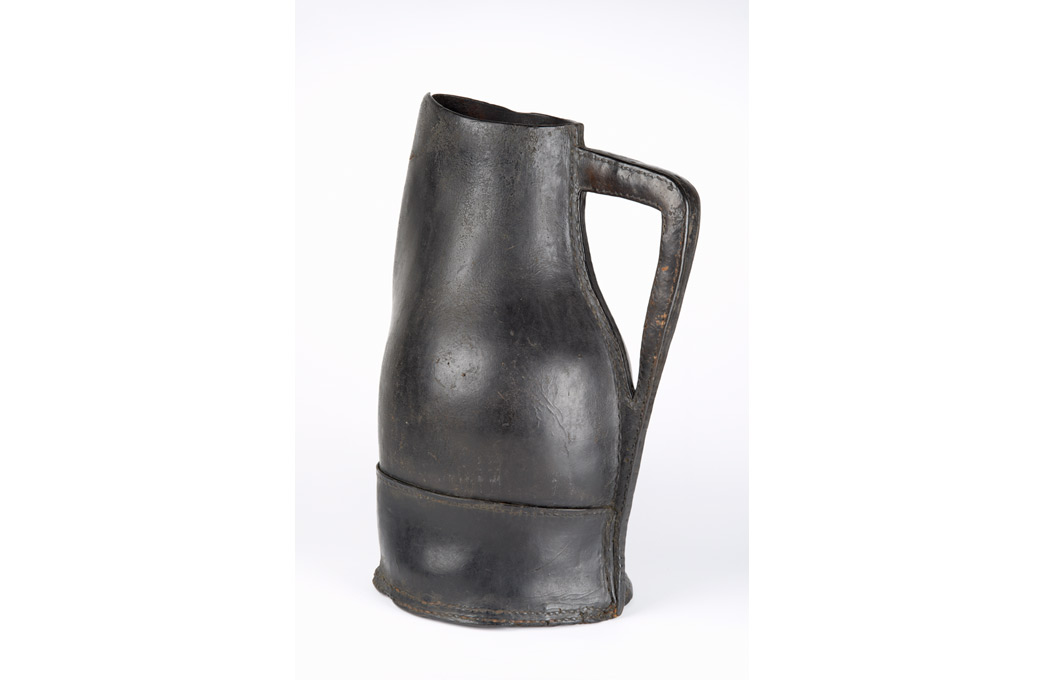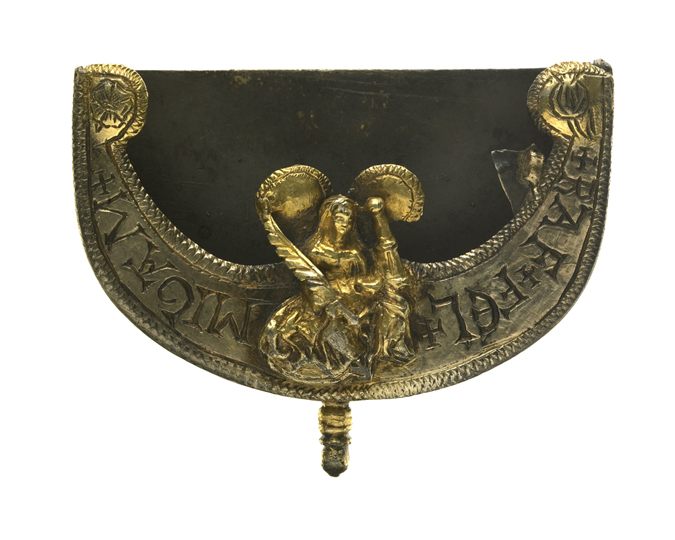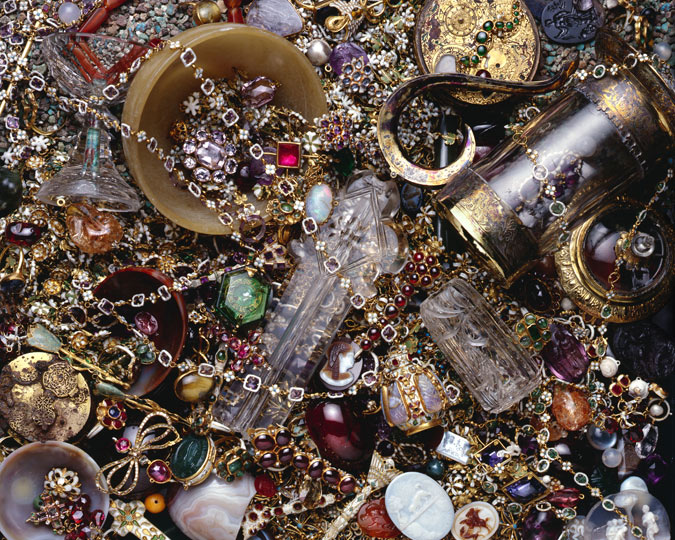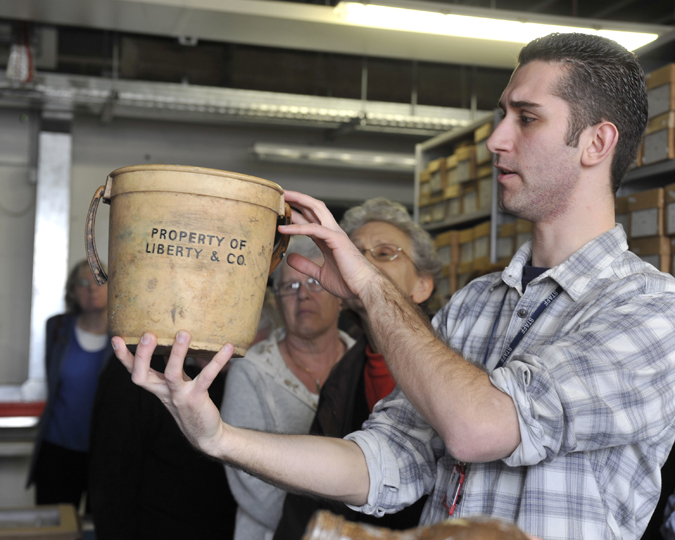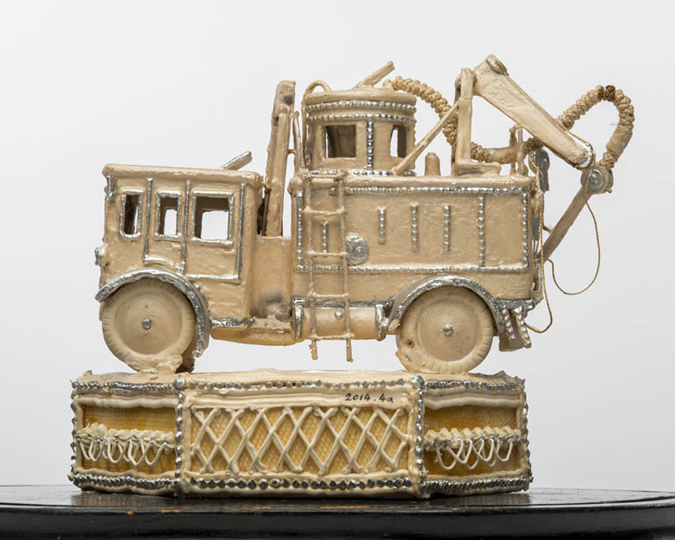To mark the anniversary of William Shakespeare's death, we've found objects from the museum's Tudor and Stuart collection that are mentioned in Shakespeare's plays and poems. These personal possessions give a glimpse of everyday life in Shakespeare's London.
In or about 1592, William Shakespeare (1564-1616) travelled from his home town of Stratford-upon-Avon to further his career as an actor and playwright in London. How long he stayed in the capital is unknown, but records suggest that he moved around from lodging to lodging, living at various times in Southwark, Bishopsgate, Blackfriars and Cripplegate, before finally purchasing a mortgage for a property at Puddle Wharf near the Blackfriars Theatre in 1613.
One of the remarkable features of Shakespeare’s literary output is his facility with language: his rich vocabulary and use of colloquial speech – sometimes quite literally, the London voice. The plays are sprinkled with references to the stuff of everyday life and for the playgoers who enjoyed the ‘two hours traffic of our stage’, such allusions must have had particular meaning and significance.
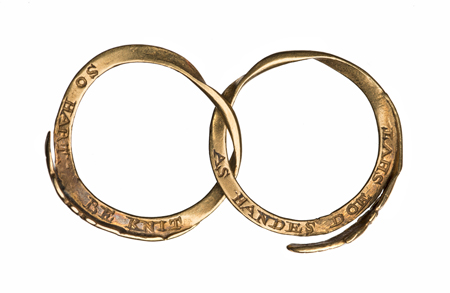
Posy Ring
‘Is this a prologue, or the posy of a ring? –
‘Tis brief, my lord’
Hamlet, Act 3, Scene 2
This gimmel ring (from the Latin gemellus, twin) is constructed from two interlocking gold bands with a bezel fashioned in the form of clasped hands. The message of union and affection is reinforced by a small heart on one finger of the upper hand. When the rings are separated a concealed motto is revealed on the inner face of each hoop: one reading AS HANDES DOE SHUT and the other, SO HART BE KNIT - a secret shared between the wearer and her lover.
Rings were given as tokens of love and remembrance. Londoners left bequests in their wills for different qualities of memorial ring which were graded according to the recipient’s relationship with the deceased. Shakespeare left £20 to buy rings at 26s 8d each for Hamlett Sadler; to William Raynoldes gentleman; to his godson Wiliam Walker; and for his fellow dramatist and actor friends John Hemynges, Henry Cundell and Richard Burbage.
Death’s head ring
‘Do not speak like a death’s head; do not bid me remember mine end’
Henry IV, Part II, Act 2, Scene, 4
This ring contains rose-cut diamonds in the eye sockets, a table-cut diamond on one shoulder and a round rough diamond on the other. Memorial rings were often refashioned and recycled, and the presence of the rough stone in an otherwise perfect jewel could indicate secondary use.
Clock
‘Methinks your maw, like mine, should be your clock And strike you home’
Comedy of Errors, Act 1, Scene 2
This drum-shaped gilt-brass table clock has a spring-driven movement, horizontal dial, single steel hand and chapter ring marked with Roman hour numerals I-XII. The clock has a separate alarm mechanism which rests over the dial when in use. The clock is small and portable and the alarm can be detached for travelling.
The clock is decorated with dragons and leaf-like ornaments. This stylistic evidence suggests that the clock was made in France, possibly by the maker Guillaume Javin of Avignon (around 1540-89). Despite the encouragement that the Tudor monarchs gave to foreign clockmakers to settle in the capital, almost all of the clocks and watches owned by Londoners in the early 1500s were imported from the European centres of watchmaking.
Posset pot
‘I have drugg’d their possets, That death and nature do contend’
Macbeth, Act 2, Scene 2
This pot was designed for posset, a nourishing semi-liquid food of sweetened milk, cream and egg, curdled with ale or wine and flavoured with spices. The liquid is sucked from the spout and the remaining solids can be scooped out with a spoon.
Ivory comb
‘To comb your noddle with a three-legg’d stool’
Taming of the Shrew, Act 1, Scene 1
Elizabethan hair-fashions were startling in their complexity: ‘curled, frisled and crisped, laid out in wreaths and borders from one ear to another’. Hair was dyed red or blond and some men dyed their beards to match their outfit or mood. Double-sided combs with fine and coarse teeth were used to style the hair and to remove parasites, pomades, sticky gums and unguents.
Bombard
‘Looks like a foul bombard that would shed his liquor’
Tempest, Act 1, Scene 2
‘That huge bombard of sack, that stuffed cloak-bag of guts’
Henry IV, Part I, Act 2, Scene 4
Bombards, large leather jugs holding six to eight gallons, were made for households or communities that were rich enough and hospitable enough to use them. The vessel was so bloated that the name ‘bombard’ became almost synonymous with inflated swaggering, posturing, boasting and obesity, which is why Shakespeare’s Falstaff is described as ‘that swol’n parcel of dropsies that huge bombard of sack’.








